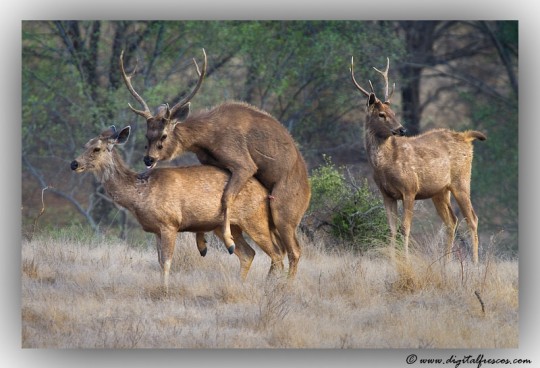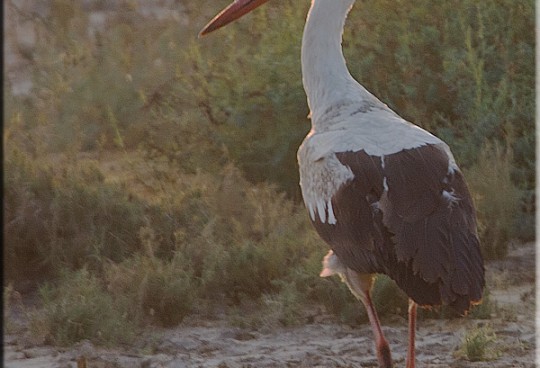The painted stork (Mycteria leucocephala) is a large wader in the stork family. It is found in the wetlands of the plains of tropical Asia south of the Himalayas in the Indian Subcontinent and extending into Southeast Asia. Their distinctive pink tertial feathers of the adults give them their name. They forage in flocks in shallow waters along rivers or lakes. They immerse their half open beaks in water and sweep them from side to side and snap up their prey of small fish that are sensed by touch. As they wade along they also stir the water with their feet to flush hiding fish. They nest colonially in trees, often along with other waterbirds. The only sounds they produce are weak moans or bill clattering at the nest. They are not migratory and only make short distance movements in some parts of their range in response to changes in weather or food availability or for breeding. Like other storks, they are often seen soaring on thermals.
This large stork has a heavy yellow beak with a down-curved tip that gives it a resemblance to an ibis. The head of the adult is bare and orange or reddish in colour. The long tertials are tipped in bright pink and at rest they extend over the back and rump. There is a distinctive black breast band with white scaly markings. The band continues into the underwing coverts and the white tips of the black coverts give it the appearance of white stripes running across the underwing lining.Like all storks, they fly with their neck outstretched. They often make use of the late morning thermals to soar in search of foraging areas. Like other storks they are mostly silent but clatter their bills at nest and may make some harsh croaking or low moaning sounds at nest. Painted storks breed on trees either in mixed colonies along with other water birds, or by themselves. The breeding season begins in the winter months shortly after the monsoons. In northern India, the breeding season begins in mid-August while in southern India the nest initiation begins around October.
Painted stork nesting colonies often become centres of tourist attraction due to their large size and colour. Particularly well-known nest sites close to human settlements are in the south Indian villages of Kokrebellur and Veerapura. In Kokrebellur, the birds nest within the trees in the village forming mixed nesting colonies with the spot-billed pelican. The local people provide security to these birds during the brief nesting season when the birds arrive in October and until they leave the village after a couple of months. Painted stork is classified as Near Threatened by IUCN.
![]()






Sorry, the comment form is closed at this time.